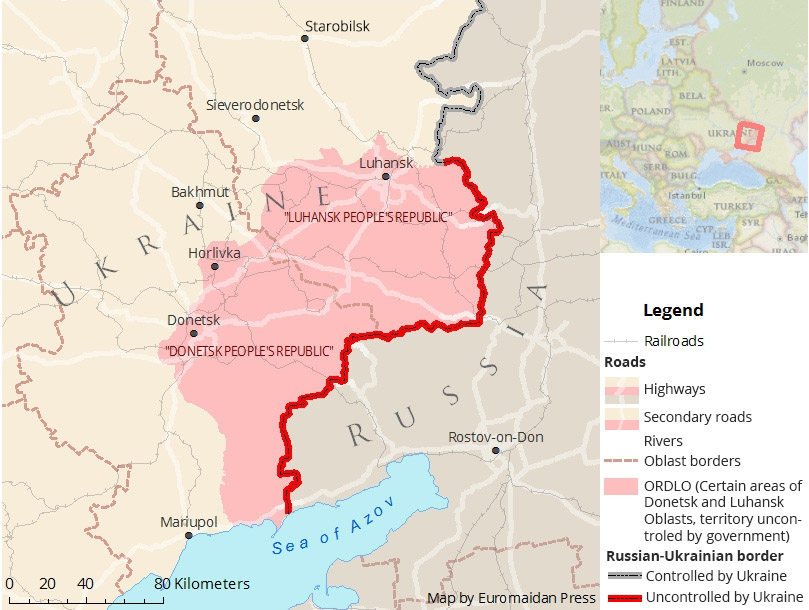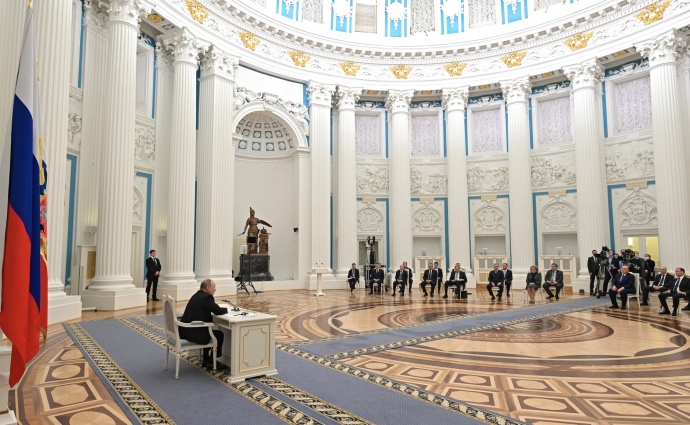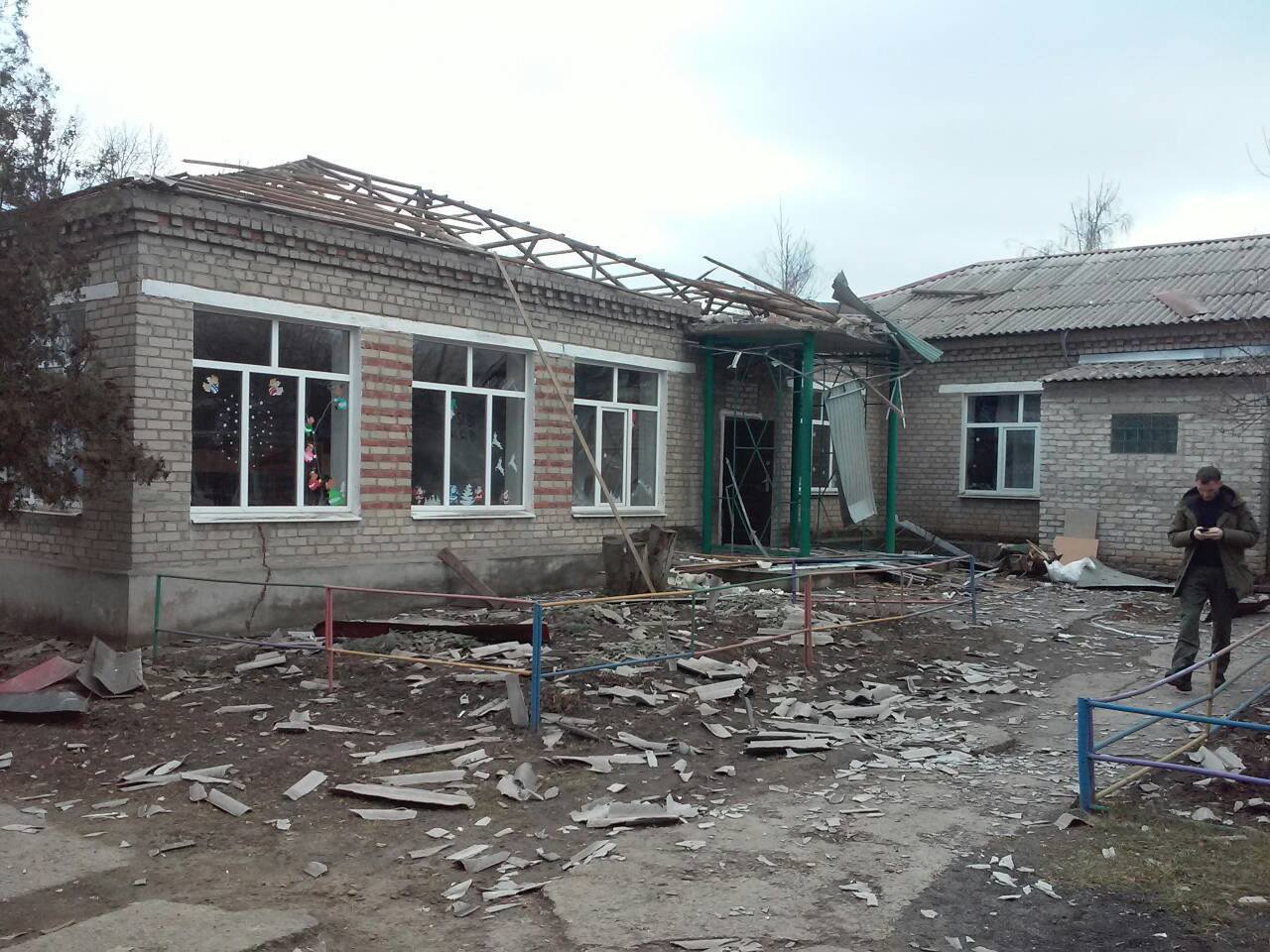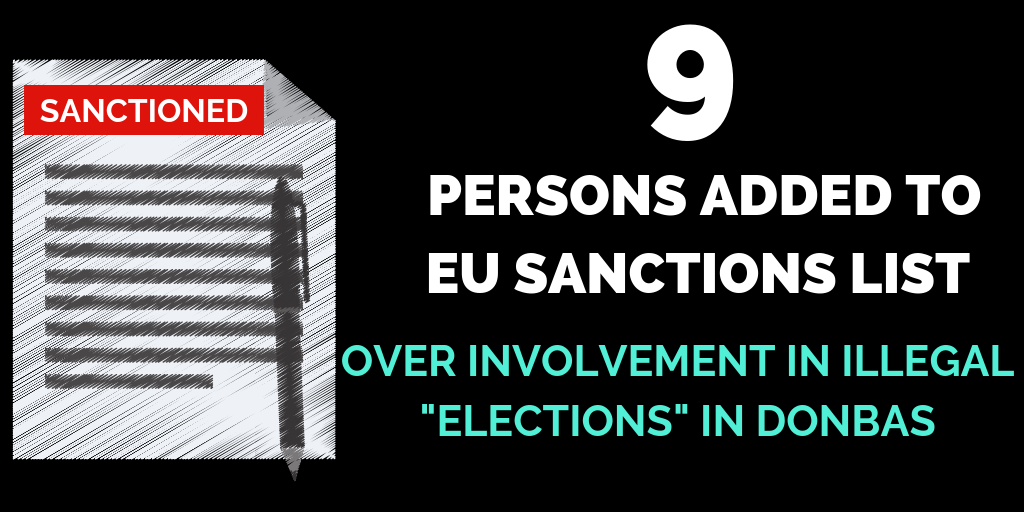Such a difference in assessing the nature of the war in the Donbas became the reason for the "war on terms" between Russia and Ukraine. So, who is fighting against the Ukrainian government in Donbas, and how do we call them?
Is the conflict domestic or international?
In December 2018, the Office of the Prosecutor of the International Criminal Court in the Ukraine-related part of their "Report on Preliminary Examination Activities" has repeated the assessments on the situation in Crimea and Eastern Ukraine which were already published in its 2016 report, and once again mentioned in the 2017 one.
According to the report, the situation within the territory of Crimea and the city of Sevastopol (which is geographically in Crimea but is a separate territorial entity) "would amount to an international armed conflict between Ukraine and the Russian Federation." The international armed conflict began "at the least on 26 February 2014" and the law of international armed conflict would continue to apply after 18 March 2014, the day when Russia annexed the peninsula. The current situation in the Crimean territory "factually amounts to an ongoing state of occupation," the report reads.
Alongside this, the Office doesn't assess the situation in the East-Ukrainian Donbas region as unambiguously as in Crimea. It says that by 30 April 2014 (the final stage of the battle for the city of Sloviansk, seized by an armed group led by Russian national Igor Girkin in mid April), "the level of intensity of hostilities between Ukrainian government forces and anti-government armed elements in eastern Ukraine had reached a level that would trigger the application of the law of armed conflict and that the armed groups operating in eastern Ukraine, including the LNR and DNR [=Luhansk and Donetsk "people's republics", "LNR/DNR" - YZ], were sufficiently organized to qualify as parties to a non-international armed conflict."
Meanwhile, the Office also assessed that "direct military engagement between the respective armed forces of the Russian Federation and Ukraine, indicated the existence of an international armed conflict in eastern Ukraine from 14 July 2014 at the latest, in parallel to the non-international armed conflict."
At the same time, the Office has considered information suggesting that Russia has been exercising overall control over armed groups in the Donbas "for the purpose of determining whether the otherwise non-international armed conflict involving Ukrainian armed forces and anti-government armed groups could, in fact, be international in character."
So, the ICC prosecutor's office considers two versions of the nature of the conflict in eastern Ukraine, this can be:
- a single international armed conflict,
- both non-international and international conflict(s).
If the conflict in the Donbas would be classified by the International Criminal Court as international, the articles of the Rome Statute relevant to armed conflict of international character would be applicable to it. Otherwise, if the ICC admits that both non-international and international conflict (or two conflicts) took place, then it would use the Statute's provisions applicable in both international and non-international armed conflict.
Ukrainian presidents and their terms
At the 19 April Ukrainian presidential debates, two days before the decisive runoff round, then-candidate Volodymyr Zelenskyy read long strings of accusations against Poroshenko. One of the allegations went: "Is it true - I don't contend it - that Roshen candies are present in rations of the insurgents of 'LNR' and 'DNR'?" Poroshenko transferred his Roshen Confectionery Corporation to a blind trust in 2016 on the second year of his presidency and Zelenskyy alleged that Poroshenko remains as an oligarch and, moreover, trades with occupied territories.
Labeling the fighters of the pseudo-states of Luhansk and Donetsk "people's republics" ("LNR" and "DNR" officially known as the Certain Areas of Donetsk and Luhansk Oblasts, ORDLO) as insurgents was met with public and media outrage since in Ukrainian realia the word insurgents ("повстанці") is commonly used for the members of the Ukrainian Insurgent Army (
On the next day, the candidate's political advisor, Dmytro Razumkov, googled through President's website and came up with a Facebook post, stating that "The question wasn't from Volodymyr [Zelenskyy], the question was from Ukrainian citizens, who had probably used the rhetoric of the still incumbent president [Poroshenko]. But we didn't receive an answer as usual."
Razumkov added two links to the 2014-2015 pages on the presidential site where the Ukrainian word "повстанці" was used to designate the members of anti-Ukrainian armed groups in ORDLO.
One of Razumkov's references was to a speech Poroshenko had delivered at Zurich University on 20 January 2015, its Ukrainian translation translated back into English reads,
"With Minsk arrangements, I have declared the ceasefire and started implementing all points without an exception, signed by representatives of Ukraine, Russia, and the insurgents. ... Despite the truce, the Russian equipped, trained and supplied insurgents continue to wage the war against the Ukrainian armed forces shelling the residential areas and killing civilians."
However, the English original is different, the arrangements are signed with the "terrorists" and Russia-supplied are "mercenaries" in it.
Another speech Razumkov referred to was delivered at the joint session of the Canadian Parliament on 17 September 2017, the Ukrainian version mentions "insurgents," though, the English original of Poroshenko's speech uses the term "rebels."
Later on the election day just after his voting, Zelenskyy commented on his "insurgents" to Radio Svoboda, saying, "The 'rebels' were implied. This is how it was written on the presidential website. The rebels who are against Ukraine."

Russian regulars and "militias"
Russian army regular detachments were involved at early stages of the war in the Donbas in summer-fall 2014 and in winter 2014-2015 along with the locally formed irregular armed formations which still remained under Russian control, yet officially were and remain not recognized as formations of the Russian army or special services.
Later the war was "outsourced" and Russia didn't engage its regular formations in fighting - since 2015, the armies remain and have been reinforced near Ukrainian borders, ready for a full-scale invasion. Meanwhile, Russia established two "army corps" of "people's militia" in Luhansk and Donetsk in fall 2014 under the command of the Russian Army's Novocherkassk-based 8th Army.
Both "corps" were mostly formed in late 2014 and in 2015 as almost all irregular armed formations were fully subdued or disbanded by Kremlin-installed local authorities. Since then, Russian regulars who arrive to reinforce the troops receive new identities and fight as "local militiamen." However, in case of their death, the "Donbas local militiamen" are buried in their Russian hometowns.
Ukraine's definitions: "terrorists," "militants"
In February 2015, the Ukrainian Parliament approved a statement recognizing the jurisdiction of the International Criminal Court over "crimes against humanity and military crimes committed by the highest officials of the Russian Federation and the leaders of the terrorist organizations DNR and LNR."
The statement calls the occupation of Crimea and military actions in eastern Ukraine "aggression of the Russian Federation and Russia-supported militant-terrorists," mentioning the 24 January 2015 missile attack on Mariupol as their latest terror attack at the moment.
In early 2018, the law "On the peculiarities of state policy on the ensuring of the state sovereignty of Ukraine over temporarily occupied territories in Donetsk and Luhansk oblasts" recognized the territories not controlled by the Ukrainian government as temporarily occupied by Russia. The legislature notes that Russia's aggression started with invasions of the detachments of the Russian military servicemen and law enforcers in the Ukrainian territory, and with Russia's support for terrorist activities in Ukraine.
The law doesn't explicitly mention the "LDNR" as a terrorist organization, however, decomposes it into components, saying that Russia has been committing the crime of aggression and is occupying Ukrainian territories using:
- regular armed formations under the command of Russia's defense ministry;
- formations under command of other Russian "siloviki" agencies (the term siloviki combines army, spy, law enforcement agencies), of their advisors and instructors;
- irregular illegal armed formations, armed gangs, mercenary groups, which were created, subordinate to, under command, and funded by Russia;
- Russia's occupation administration which usurped powers in the occupied territory.
The Ukrainian Army uses in their daily communiqués the term militants ("бойовики" which means members of a military group, can be also translated as a neutral term "fighters") or "armed formations of the Russian Federation."
Law enforcers register all instances of attacks on residential areas under Article 258 of the Criminal Code ("terrorist attack") in the Unified Register of Pre-Trial Investigations.
Ukrainian courts refer to Article 1 of the law "On combating terrorism" classifying both "LNR" and "DNR" as terrorist organizations. Judges convict members of Donbas-based armed groups under terrorism charges. For example, Brazilian national Rafael Marques Lusvarghi was sentenced to 13 years in prison for both participating in a terrorist group and in an illegal armed group (paragraph 1 of Article 258-3 and paragraph 2 of Article 260 of the Criminal Code of Ukraine).
Meanwhile, the civilians who took part in holding the so-called Donbas referendums back in 2014 receive prison terms (mostly suspended ones) for violation of territorial integrity, thus being rather separatists than terrorists by law.
Ukrainian press often refers to both civil secessionists and armed groups as just "separatists." The term "mercenaries" is usually used for the Russian or other foreign nationals who are members of the illegal armed groups in the Donbas.
From the viewpoint of International humanitarian law, the Russian active duty soldiers can be classified as combatants of the international conflict. However, it gets trickier with the Russian "volunteers" who came to fight in Ukraine searching for easy cash. They can't be called "combatants" (as they are not under the command of Russian armed forces), nor "mercenaries": from the viewpoint of international humanitarian law, mercenaries cannot be nationals of a country which is part of the armed conflict and only foreign fighters coming from Spain, Brazil, Poland, etc. can be termed that way. Neither can the Ukrainians fighting against the Ukrainian government be called "combatants," as Ukrainian citizens can't be combatants against their own country. A term of International humanitarian law that could be used to refer to both the Ukrainians fighting against the Ukrainian government and the Russians fighting for money - "organized armed groups."
But for now, most participants of the conflict in Donbas are judged for committing "terrorist attacks," even the Russian active duty soldiers who Ukraine does not treat as prisoners of war under the Geneva Convention. Likewise, the Ukrainian soldiers captured in the "LNR" and "DNR" do not have the status of POWs by Ukraine. Ukraine still has not adopted a law to criminalize war crimes, which limits the ways that participants of the conflict in Donbas who committed them can be brought to responsibility. These moments indicate that in the legal sphere, Ukraine is far from calling the war in Donbas a war. If there's anything that experts on the conflict in Donbas do agree on, it's that Ukraine needs to urgently streamline its legal framework to the requirements of international humanitarian law, as well as the dictionary of terms used for the conflict.
Russia's "militias," "militiamen"
Russian media and officials usually use the terms militias and militiamen (Russian "ополченцы" meaning members of an auxiliary volunteer armed formation) for the anti-Ukrainian armed groups and their members in the Donbas. Sometimes the term is specified as "local militias" or "people's militia." The latter is how the armies formed in Luhansk and Donetsk call themselves. The term "rebels
" is also used, though only by Russian English-language media since the Russian corresponding terms ("бунтовщики, мятежники, повстанцы") imply an uprising against Ukraine which contradicts the propaganda narrative that it was Kyiv who attacked the Donbas where the residents had unanimously voted for independence on "democratic referendums."
The Russian state-funded press has been using the terms "the self-proclaimed Donetsk People’s Republic" and "the self-proclaimed Luhansk People’s Republic" treating the Russia-occupied territories of Ukraine as real states.
Russian officials use the same terms. However, the Russian official documents refer to the non-government-controlled region as the "certain areas of Donetsk and Luhansk oblasts of Ukraine," this is how the occupied Donbas is called in the Minsk Agreements and how official Ukraine refers to this territory.
Russian media never label the armed groups who control ORDLO as "terrorists" or "mercenaries" since Russia has been consistently spreading the narratives of a local domestic conflict unleashed by the "Kyiv government" (which came to power as a result of a coup according to Putin) against "the peoples of Luhansk and Donetsk." The Kremlin sometimes even refers to the conflict in eastern Ukraine as a "civil war."
Any terror attacks conducted by the Russian-hybrid forces - be it killing Donetskers at the Volnovakha checkpoint or missile strikes on a residential neighborhood in Mariupol or shooting down the Malaysian flight MH17 - are always ascribed to Ukrainian forces in the Russian press. Meanwhile, even when admitting the Russian presence in the so-called "people's militias," the Russian press calls the mercenaries "volunteers." So do the Russian officials, too.
Russian independent media use the full range of the terms to designate the anti-Ukrainian belligerents: "Russian-backed separatists," "Donbas fighters," "pro-Russian insurgents," "Russia-aligned rebels," "rebel militias." However, they also avoid calling them terrorists.
Meanwhile, the Russian occupation authorities flip the Ukrainian terms and label the Ukrainian forces "terrorists" and "illegal armed groups."
Western press
Western newspapers use a variety of terms for Russian-hybrid forces in the Donbas. "Fighters, rebels, separatists, insurgents, militants" - several of the terms can be mentioned within one article as synonyms. However, the term "terrorists" is usually avoided.
Rebels
The term "rebels" is widely used in the Western press. Reuters calls Donetsk and Luhansk "rebel-controlled," The Guardian calls the occupation forces "rebel fighters," and CNN labels them as "pro-Russian rebels." As well as BBC uses "rebels" as their main term for the armed groups who control Luhansk and Donetsk.
Separatists
The terms separatists and secessionists were most popular at the beginning of the war in 2014. For example, the Washington Times called the Donbas war an "armed secessionist insurrection," and TIME mentioned those who fought against Ukrainian forces in the Donbas as "pro-Moscow separatists who have been fighting a five-month insurgency against Kiev." However, the "separatists" remain in demand. BBC often uses the term "pro-Russian separatists" and DW can refer to the fighters as "Russian-backed separatist rebels" or "separatist fighters," and RFE/RL "Russia-backed separatist forces
."
Insurgents
The term "insurgents" is used as by US Congress-funded outlets, Voice of America ("Russia-backed insurgents") and RFE/RL ("Russia-backed insurgency in eastern Ukraine"), as by Chinese state-run Xinhua which uses "pro-independence insurgents" as their main term for Russian-backed forces. The "insurgents" for Russian-hybrid forces can be found on Blomberg, Washington Post, Fox News. Though the term isn't commonly used by all major media.
Militants
The "militants" are also widely used by various media. Newsweek, DW, FT referred to Aleksandr Zakharchenko as a "militant leader," while BBC, CNN, Washington Post refer to the fighters as "militants."
Militiamen
The term most favorable in Russia media, militiamen or militias, can also occur in the Western media. BBC referred to the Russian-backed armed groups as "local militias" or "militia men," CNN called members of warlord Motorola's group "militiamen" too. However, the term is not that popular as rebels, fighters, or militants in the Western press.
Terrorists
The term "terrorists" is mostly used in the Ukrainian media. The Western media usually avoid it since it bears the most negative connotation, however it sometimes occurs in the cited direct speech of Ukrainian officials ("Kiev’s security service blamed internal fighting 'between the terrorists and their Russian sponsors'", "Mr Turchynov said the airbase at Kramatorsk had been 'liberated' from 'terrorists'").
Members of Russia's armed formations
This term of the Ukrainian army's press service which is also sometimes used by other Ukrainian officials is barely used in the Western press, usually in direct quotes.
Fighters
The most-neutral term "fighters" is widely used in media. You can run into it on most of the major media such as BBC, CNBC, Voice of America, RFE/RL, DW.
This article was updated to include the ambiguities of the Ukrainian legal position, as well as to add Euromaidan Press' terminology for the participants of the conflict.
Read more:
- Is Russia’s passport scheme in Donbas a harbinger of full-scale invasion like in 2008 Georgia?
- Ukraine’s economic losses due to Russian occupation of Donbas
- Human rights NGO reports on 119 known hostages behind bars in occupied Donbas
- Russian celebrity tank commandress defects to Ukraine, leaks details on Russian involvement in occupied Donbas
- 12 facts about the Donbas that you should know
- With Donbas occupation, Russia brought religious persecution alien to Ukraine: report
- Far right and left, conspiracy theorists among “foreign monitors” at Russia’s sham elections: Report
- Moscow increasingly acknowledges it controls Donbas regimes, Kirillova reports
- OSCE drone films Russian trucks entering Donbas at night
- Putin seized Crimea with regular army but outsourced action in Donbas
- From Donbas to Syria: investigation reveals Ukrainians fighting in Russian PMC Wagner
- PMC Wagner is a unit of Russian military intelligence, mercs’ IDs show - SBU
- What we know about Russia’s active duty soldiers captured in eastern Ukraine from 2014
- Ukraine-related narratives dominate Russian propaganda – disinformation watchdogs
- The hidden invasion: Russia’s military convoys to Ukraine since 2014
- Two “DNR ministers” surrender to Ukraine. Will the rest follow?
- New footage shows Russian PMC Wagner involved in crucial 2015 Debaltseve battle in Ukraine
- PACE urges Russia end support to illegal armed groups in Donbas
- Bellingcat publishes interactive map of Russian artillery strikes across Ukrainian border
- Ukrainian civil resistance to Russian occupation in Donbas
- Russian “siloviki” oversee power vertical of occupied Donbas
- Who is who in the Kremlin proxy “Donetsk People’s Republic”
- Who is who in the Kremlin proxy “Luhansk People’s Republic”
- The rise and decline of Donbas: how the region became “the heart of Soviet Union” and why it fell to Russian hybrid war






